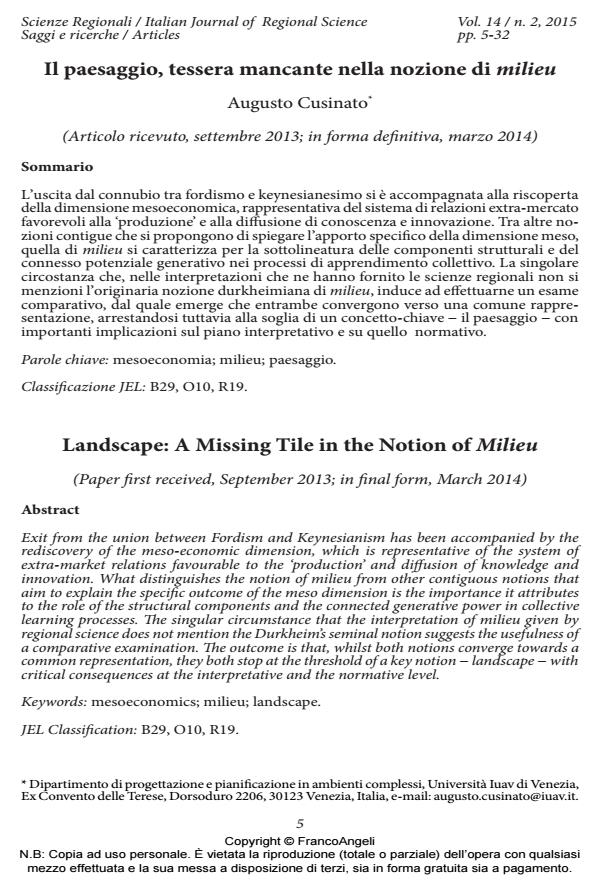Landscape: A Missing Tile in the Notion of Milieu
Journal title SCIENZE REGIONALI
Author/s Augusto Cusinato
Publishing Year 2015 Issue 2015/2
Language Italian Pages 28 P. 5-32 File size 239 KB
DOI 10.3280/SCRE2015-002001
DOI is like a bar code for intellectual property: to have more infomation
click here
Below, you can see the article first page
If you want to buy this article in PDF format, you can do it, following the instructions to buy download credits

FrancoAngeli is member of Publishers International Linking Association, Inc (PILA), a not-for-profit association which run the CrossRef service enabling links to and from online scholarly content.
Exit from the union between Fordism and Keynesianism has been accompanied by the rediscovery of the meso-economic dimension, which is representative of the system of extra-market relations favourable to the ‘production’ and diffusion of knowledge and innovation. What distinguishes the notion of milieu from other contiguous notions that aim to explain the specific outcome of the meso dimension is the importance it attributes to the role of the structural components and the connected generative power in collective learning processes. The singular circumstance that the interpretation of milieu given by regional science does not mention the Durkheim’s seminal notion suggests the usefulness of a comparative examination. The outcome is that, whilst both notions converge towards a common representation, they both stop at the threshold of a key notion − landscape − with critical consequences at the interpretative and the normative level.
Keywords: Mesoeconomics; milieu; landscape.
Jel codes: B29, O10, R19.
- Innovare ai margini. micro esperienze di abitare sociale in veneto Alessandro Boldo, in ARCHIVIO DI STUDI URBANI E REGIONALI 116/2016 pp.69
DOI: 10.3280/ASUR2016-116004 - Il ruolo delle piccole e medie città nell'economia 3.0. Evidenze dal caso italiano Fabiano Compagnucci, Augusto Cusinato, in SCIENZE REGIONALI 2/2016 pp.61
DOI: 10.3280/SCRE2016-002004
Augusto Cusinato, Il paesaggio, tessera mancante nella nozione di milieu in "SCIENZE REGIONALI " 2/2015, pp 5-32, DOI: 10.3280/SCRE2015-002001